|
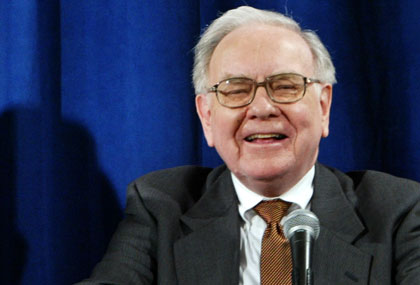
Warren Buffett- World's Richest Man
Warren Edward Buffett born Aug 30, 1930 in Omaha, NE, is an American investor, businessman, and philanthropist. He
is regarded as one of the world's greatest stock market investors, and is the largest shareholder and CEO of Berkshire Hathaway.
With an estimated net worth of around $62 billion,he was ranked by Forbes as the richest person in the world as
of March 5, 2008.
Often called the "Oracle of Omaha," Buffett is noted for his adherence to the value investing philosophy and for his personal
frugality despite his immense wealth. His 2006 annual salary of about $100,000 is tiny by the standards of senior executive
remuneration in other comparable companies, and when he spent $9.7 million of Berkshire's funds on a business jet in 1989,
he jokingly named it "The Indefensible" because of his past criticisms of such purchases by other CEOs. He continues to live
in the same house in the central Dundee neighborhood of Omaha that he bought in 1958 for $31,500, today valued at around $700,000.
Buffett is also a noted philanthropist. In 2006, he announced a plan to give away his fortune to charity, with 83% of it
going to theBill and Melinda Gates Foundation. In 2007, Buffett was listed among Time's 100 Most Influential People in The
World. He also serves as a member of the board of trustees at Grinnell College, where his advice on asset management has led
to Grinnell College having the second largest endowment of any liberal arts college in the United States.
 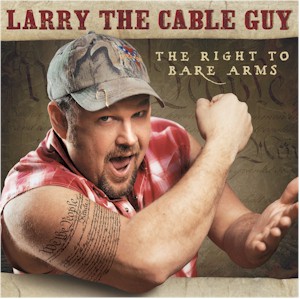
Larry The Cable Guy
Daniel Lawrence Whitney, better known by the stage name Larry the Cable Guy, was born February 17, 1963 in Pawnee
City, Nebraska. He is a stand up comedian, actor, and one of the co-stars of the Blue Collar Comedy Tour. He currently
lives in Florida.
Whitney started a career in radio as a disc jockey in Blue Springs, Mo. He moved to Omaha, NE where he was a personality
on the short lived alternative station 101.9 The Edge KGDE.
He was and still is a regular via phone during the late 90s on Z92's The Todd and Tyler Show in Omaha, Nebraska
and he is a dedicated supporter of the Nebraska Cornhuskers football team. He frequently attends Husker games in his luxury
box above Memorial Stadium and maintains a second home in Lincoln. He has a nephew, Christopher Luly, who attends Midland
Lutheran College in Fremont, NE.
 
Marg Helgenberger
Born 1958 in Fremont, lived at North Bend and Kearney. Television and film actress,
has appeared in over 50 television series, movies and specials, and 10 films, recipient of Emmy Award in 1989 and nominations
in 1991 and 2001, recipient of Viewers for Quality Television Award in 1990. Currently stars in CSI.
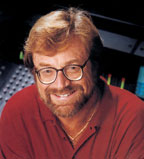
Louis "Chip" Davis Jr.
Chip Davis lives in Omaha, NE. Composer, musician, founding executive of American Gramophone in 1974, arranger for
Mannheim Steamroller Group, was named Country Music Writer of the Year in 1976 for "Convoy"; nominated for 1985 Grammy Award.
 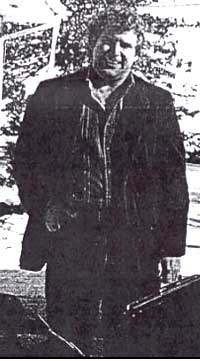
Steve Gibbs
Steve Gibbs grew up on a farm near Clearwater, NE. After graduating high school he took trade school courses in electronics
and gained an excellent reputation for fixing things, putting things together, and installing things while helping the family
farm. Steve claims he has invented a device that can be used for out-of-body time travel as well as actual physical time travel.
His device is called the hyperdimensional resonator and it works like a radionics machine.
After the unit has been connected to a 100-volt outlet, the dials on it are tuned radionically for the day, month, and
year one wishes to visit. This is done while the time coils are positioned around the head. If everything is done correctly,
they will be transported to the time and place of their choosing.
Gibbs says his device is not that much different from what was used in the Philadelphia Experiment. Simply finding a grid
point is not enough. Time travelers also need to know the exact time the grid activates and this happens within a time frame
of 2-3 hours. Gibbs has also related a number of experiences both of friends and of his own that verify his device works.

Daniel Freeman
Daniel Freeman is credited as the first person in the nation to file a Homestead Act claim. As the story goes, Freeman
persuaded an official to open the land office at Brownville, Nebraska Territory, shortly after midnight on January 1, 1863,
the day the law took effect. Freeman, a Union soldier on furlough, claimed land near Beatrice, Nebraska. Freeman's homestead
is preserved as Homestead National Monument, administered by the National Park Service.

Robert Ball Anderson-First Black Homesteader
Robert Ball Anderson was born into slavery in 1843 in Kentucky. In 1864 he fled his home and made his way to a recruiting
office in a neighboring county. He enlisted in the Union Army and joined the 125th Colored Infantry, but the war ended before
he saw action. He spent the remainder of his three-year enlistment in the West. Eventually Robert Anderson arrived in eastern
Nebraska. He settled in Butler County and filed a claim under the Homestead Law for 80 acres of land. He was forced to give
up his claim in 1881 due to low farm prices, a drought, and grasshopper infestations.
He spent the next three years as a farmhand in Kansas, but he still dreamed of owning his own place. He headed for western
Nebraska in 1884, and by 1886 he took up a tree claim under the provisions of the Timber Culture Act. Anderson suffered through
some financial disasters, but was eventually able to add to his land holdings. By 1918 he was the owner of 2,080 acres of
land.
Anderson escaped the racial prejudice of the South, but found he still lived in a society influenced by racist ideas. Nebraska
prohibited slavery in the State Constitution of 1875, but had laws that did not recognize mixed marriages and required that
the "color" of voters be indicated on registration cards. The white community, however, generally accepted Anderson as he
was one of the few black men living in Box Butte County, had a good military record, and was a successful rancher and farmer.
As one man stated, "If there was ever a gentleman -- if I've ever known one -- it was Robert Anderson".
 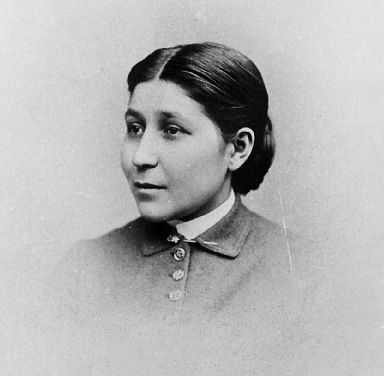
Susan LaFlesche Picotte (1865-1915)
Susan LaFlesche Picotte, the first native American woman to earn a medical degree, was born on the Omaha reservation near
Macy in northeastern Nebraska in 1865. She was the youngest daughter of Mary and Joseph LaFlesche. Mary was a daughter of
Dr. John Gale and Ni-co-mi of the Iowa tribe. Joseph, also known as Iron Eye, was a son of Joseph LaFlesche, a French trader
and his wife, a woman of the Ponca tribe. Iron Eye was the last recognized chief of the Omaha.
Between 1870 and 1879 Susan attended school on the reservation. At the age of 14, she enrolled at the Elizabeth Institute
for Young Ladies at Elizabeth, New Jersey. Here she studied philosophy, physiology, and literature. After she was graduated
in 1882, Susan worked at the Mission School on the Omaha reservation until 1884. Along with two of her sisters, she attended
Hampton Normal and Agricultural Institute in Virginia from 1884 to 1886.
Susan then entered Women's Medical College of Pennsylvania at Philadelphia, receiving financial aid from the Women's National
Indian Association. She was graduated, first in her class of thirty-six members, in 1889 with a medical degree. After interning
for one year at Women's Hospital in Philadelphia, Susan returned to the Omaha reservation to become a physician for the government
school. Later she became government physician for the Omaha Tribe. She was the only Indian ever appointed as a medical missionary
by the Presbyterian Board of Home Missions.
In 1894 Susan married Henry Picotte. They were the parents of two sons. After her marriage, Dr. Picotte resigned from government
school work and settled at Bancroft where she cared for her family and her ailing mother and also provided medical care for
Indians and for her white neighbors.
In 1905 Henry Picotte died. The next year Dr. Picotte, along with her sons and her mother, moved to the new community of
Walthill to live near her sister, Marguerite Diddock. The two sisters were active in the community, sponsoring religious and
community activities.
Dr. Picotte was also active in medical organizations. She was one of the founders of the Thurston County Medical Association.
As county health officer, she was involved in public health issues. She lobbied at the State Legislature for better public
health laws.
As a member of the State Medical Association, Dr. Picotte worked to combat alcoholism among the Omaha, and she lectured
in favor of temperance. Her father, Joseph LaFlesche, had worked successfully for temperance among the Omaha for many years.
In 1906 Dr. Picotte's work brought about in Washington, D.C. a stipulation that every property deed in communities on the
Omaha reservation would prohibit the sale of alcohol.
Dr. Picotte was an able spokesperson for her people, declaring that she would cooperate with the Indian Agencies in anything
that was for the good of the tribe. She battled government bureaucracy and worked for economic, social, and spiritual advancement
of native Americans.
In 1912 a new hospital, built for Dr. Picotte with funds received from grants and donations, opened in Walthill. After
Dr. Picotte died on September 18, 1915, the hospital was named in her honor. The hospital existed until the late 1940s. Later
it served as a care center for the elderly. In 1989 the building was restored and it now displays photos and artifacts from
Dr. Picotte's life. Named the Susan LaFlesche Picotte Center, it commemorates Dr. Picotte's medical work and her life, dedicated
to the welfare of her people.
Because of Joseph LaFlesche's foresight, Susan LaFlesche Picotte and the other LaFlesche children were well educated. In
order to work effectively for the welfare of the Omaha and other native Americans, they adapted to the ways of the white culture
around them. They truly lived in two cultures.
   Dr. Harold Edgerton
Dr. Harold Edgerton was born in Freemont, Nebraska on April 6, 1903.
He was raised in Aurora, Nebraska, then entered
the Massachusetts Institute of Technology in 1926. He died in 1990.
Dr. Harold E. Edgerton, professor at MIT and inventor of the electronic flash, devoted his career to
recording what the unaided eye cannot see. His photographs illustrate such moments as: a bullet seen the instant it explodes
through an apple, a perfect coronet formed by a milk-drop splash, and a football dented by the contact of Wes Fesler's booted
foot. These images have become classics of modern art and science.
Dr. Edgerton was the first to take high-speed color photographs and was a pioneer of multiflash and microsecond
imagery, which he used to take detailed photographs of hummingbirds in motion, as well as the progression of athletes' movements.
These wondrous images have shown us things we were never able to see before, in photographs that are as remarkable for their
precision as for their beauty.
James Capone aka Richard "Two-Gun" Hart
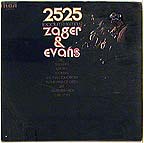
Zager and Evans
In 1968 Nebraskans Denny Zager and Rick Evans, as the rock group Zager & Evans, recorded the darkly
prophetic In the Year 2525 (Exordium & Terminus). Considered one of the most famous "one hit wonders" in U.S. recording
history, it topped Billboard's Top 40 chart for six weeks during the summer of 1969. Billboard later declared it the Record
of the Year for 1969.

Danny Liska
Danny Liska's intriguing stories from Knox County, Nebraska, include tales of monsters, ghosts, UFOs, Bigfoot, and the
"Little People."
Liska's Bigfoot Ranch was the setting of a Metaphysical Institute tapping into the "cosmic energy produced
there by the confluence of the Missouri and Niobrara rivers and the Bazile, Ponca, and Verdigre creeks."
Liska is best known for his early 1960s motorcycle trip from the northern tip of Alaska to the southernmost tip of South
America, chronicled in his book, Two Wheels to Adventure.

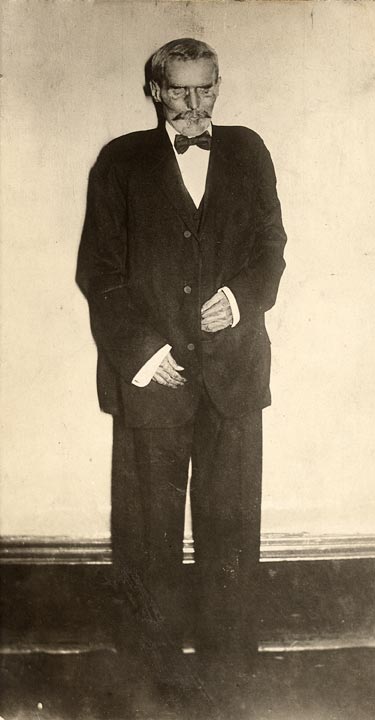
John O'Connor
John O'Connor died on August 17, 1913, in Hastings, leaving no known heirs or will and a $100,000 fortune. Suddenly heirs
began coming out of the woodwork. During court proceedings to determine who would receive O'Connor's money, the county judge
ruled that O'Connor's body should not be buried. It was kept in an air- and watertight vault at a local morgue to "be preserved
there indefinitely pending positive identification by relatives." On February 10, 1916, more than two and a half years after
his death, O'Connor was finally buried. Judicial proceedings in the case continued for nearly twelve more years before O'Connor's
money lapsed to the state.
Source: Nebraska State Historical Society Public Records
 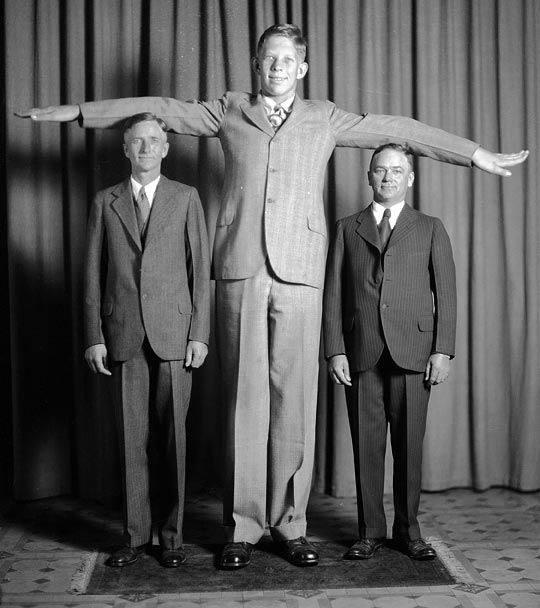
Cecil Wadlow
Cecil Wadlow of Lincoln and an unidentified man are pictured with Cecil's nephew, Robert Wadlow,
the tallest man who ever lived. Robert, of Alton, Illinois, reached the height of 8' 11" due to a glandular disorder. Robert
was only twelve when this photo was taken in Lincoln in 1930.
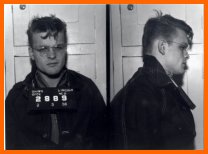
Charles Starkweather - America's First Known Spree Killer
Mildred Lothrop - Hero of Two Homer, NE Floods
William Thompson
In August of 1867 Union Pacific railroad worker William Thompson was attacked by a band of Cheyenne Indians, scalped, and
left for dead. Reviving from the attack and retrieving his scalp, which the Indians had dropped, Thompson made it to Omaha
with the scalp in a bucket of water. Doctors were unable to reattach the scalp, and it was eventually donated to the Omaha
Public Library, where it was displayed for many years.
Source: Nebraska State Historical Society RG2411-5587b,c
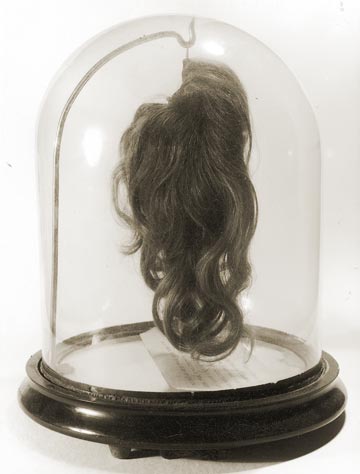 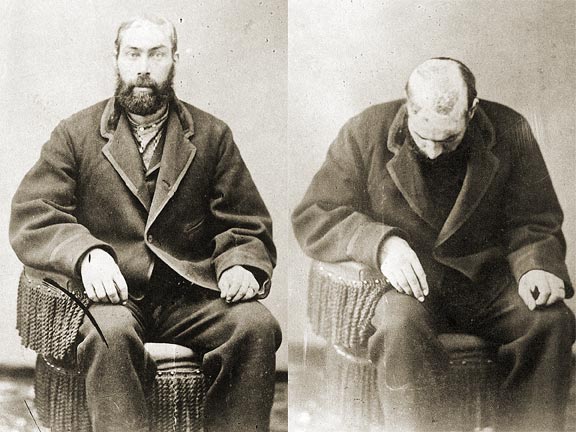 
Henry Olerich
Utopian novels, touting plans to help the common person lead a "better life," were popular in the late 1800s.Henry
Olerich, who moved to Omaha in 1902, wrote such works. His first, A Cityless & Countryless World , centered around a Martian
who came to earth to teach earthlings how to create a paradise similar to the one on Mars. The paradise would include"communities"
(rectangular tracts of land) on which "big houses" would be built, each accommodating a "family" of one thousand. Each member
of the family would be required to work toward the greater good of the community. Although Olerich planned to develop one
of his communities in Nebraska, he was never able to find the needed support. He continued to publish books promoting Utopian
ideals until his death in 1927.
Sources: Nebraska State Historical Society Library Collection & RG1078
 
David P. Abbott was born in 1863 near Falls City and lived most of his life in Omaha. Although Abbott was a businessman,
he was best known as an amateur magician, investigator of paranormal claims, author, and inventor of such effects as the Floating
Ball, the Talking Teakettle and Spirit Paintings. He did not give public performances, but instead invited guests into his
parlor, where he amazed them with his own original magic. He wrote Behind the Scenes With the Mediums (1907), considered
to be one of the best exposures of the methods used by fraudulent psychics, and The Marvelous Creations of Josephy
(1908). He also wrote The David P. Abbott Book of Mysteries, published posthumously by Walter Graham in 1977.
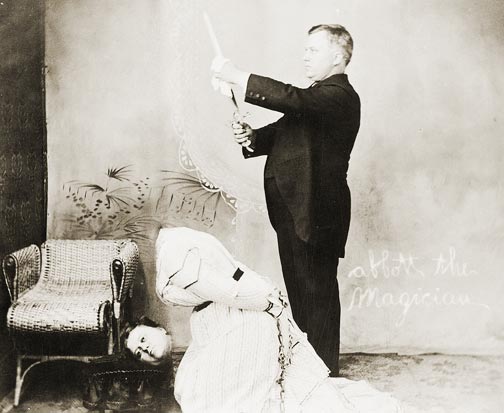
|
| Abbott cutting off womans head trick |

Emery Blagdon
Emery Blagdon, Nebraska native and former hobo, was considered just another eccentric bachelor when he died in 1986. Few
of his neighbors knew that, for thirty years, Blagdon had been creating a masterpiece of folk art in his dilapidated Sand
Hills farm shed. The collection consisted of nearly one hundred paintings and about four hundred and fifty wire sculptures,
embellished with wood, ribbon, beads, tin, and plastic. His work filled every corner of the 800-square-foot shed and was illuminated
by twinkling Christmas lights. Blagdon believed that his pieces created an electromagnetic field that could treat various
diseases. When asked to explain, he would simply say, "I don't know why, it just works."
| Photo by Richard and Sally Greenhill |
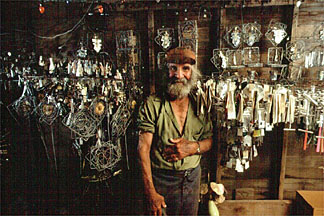
|
| Emery Bragdon and his "Healing Machines" |
Click here to see photos of Emery Blagdon's healing machines and other art

Nebraska Bachelor 2007 - Cosmopolitan Magazine
Name: Matt Romaire
Age: 23
Hometown: Papillion
Occupation: Exercise-science student
In
his own words: "I’m humble and good-natured. I don’t see the point of getting too angry. Life is so short."
Faithful fella: "I’ve never cheated on a girl. I think it’s morally wrong. I wouldn’t
want a woman to cheat on me, so I wouldn’t do it to her."
Pick-him-up ploy: "Tell me that I have
nice eyes."
Sexiest girl getup: "An old tee shirt of mine"
Favorite female body part:
"Her back. I love the curves."
Wow him by wearing: "My old T-shirt."
Dating deal breaker:
"When she talks too much about shopping and clothes"
Hint from a hottie: "The typical guy needs to be
reassured every once in a while that his girlfriend still has strong feelings for him."
Opposite-sex vex:
"Why do women insist on asking for a man’s advice, but then often don’t take it?"
Strange Disapearances
These people were born in Nebraska and then vanished--never to return...
|
From Belmont to the Oscars
BY CINDY LANGE-KUBICK / Lincoln Journal Star |
|
Hilary Swank, just a girl from a Washington trailer park with a dream? Not quite. The Million
Dollar Baby got her start far from Bellingham, Wash. -- in Lincoln's Belmont neighborhood.
Baby girl Swank was born at Lincoln General Hospital
July 30, 1974, according to Lincoln Star archives.
The future two-time Academy Award winner went home to 3335 Portia
St., Apt. 2C, on the far north side of town. And she stayed for three years, according to city directories.
Lori Lodwig,
who now lives in 2C, wasn't overly impressed. "I don't even know for sure who she is," said the mother of 2½-year-old Lillian
Wittmuss.
The young mother doesn't get to many movies — or watch
much TV. And she didn't hear Swank's Academy Award acceptance speech Sunday: "I'm just a girl from a trailer park who had
a dream."
Lodwig is too busy with a daughter who has a dream of her own. "She wants to be a pro wrestler right now.
That's her main goal in life."
Maybe Swank hadn't started dreaming during her Lincoln years. But in 1977, the family
moved a few blocks to 1110 Butler Ave., again according to a city directory.
"That's the weirdest" said Nanci Wells,
who has lived in the white house on Butler with her husband, Bill, since 1980.
But it's amazing how many famous people
have Nebraska roots, she said. Nick Nolte. Johnny Carson. Dick Cavett. Marlon Brando.
"They don't stay here and they
never come back, but that's OK."
Wells didn't know about the Swank connection until a reporter phoned. "I told my friend
about it and she said, ‘You should put it (the house) on e-Bay right now." |
Marlon Brando- April 3, 1924, Omaha
Fred Astaire- May 10, 1899, Omaha
Dick Cheney- January 30, 194, Lincoln
Malcolm X- May 19, 1925, Omaha
L.Ron Hubbard- March 13, 1911, Tilden
Gerald Ford- May 19, 1913, Omaha
Paula Zahn- February 24, 1956, Omaha
Henry Fonda- May 16, 1905, Grand Island
Nick Nolte- February 8, 1940, Omaha
Doug Ingle from the late 60's band Iron Butterfly is from Omaha.
|


